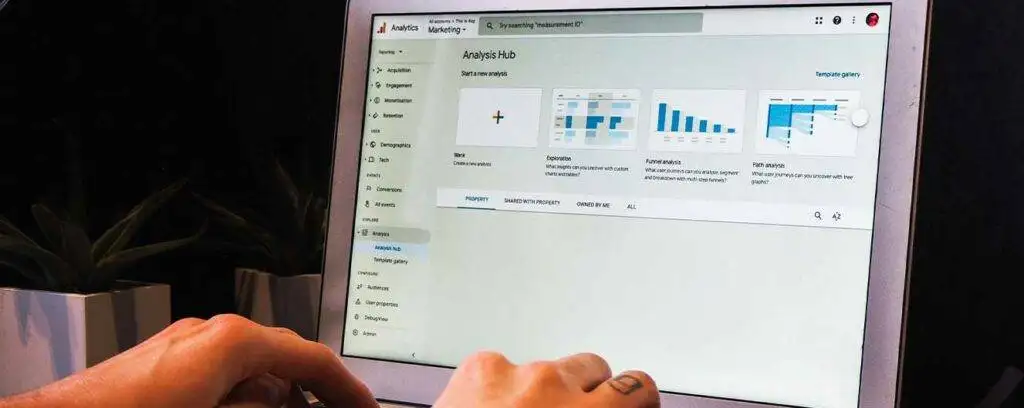If you want to drive organic traffic, link building is your best friend and therefore, you must know how to check backlinks in Google Analytics. However, those familiar with GA understand that it isn’t exactly the go-to tool for directly tracking backlinks. You don’t have to worry though; with the right strategy, you can still figure out the sites that are generating traffic for your website.
This comprehensive post delves into how to check backlinks using Google Analytics so you can harness other benefits like enhancing your search engine rankings. Knowing where your backlinks are coming from can also help you build stronger partnerships, protect your site, and drive more conversions.
Backlinks 101: What Is It and Why Should You Care?
We’ve briefly touched on why backlinks are important. We’ll offer a few more reasons why they really do matter. But first, let’s get to understand what they really are. Backlinks are links that other websites put in their content and redirect users to another.
Think of them as votes of confidence from other websites. This means that they identify your website as reliable, authoritative, and helpful to their users. When a reputable website links back to your site, it indicates to Google that your content is valuable and trustworthy.
So, why should you care about backlinks? Well, they’re vital because Google uses them as an important ranking parameter. That means the more backlinks your site has, the higher your chances of organically ranking not just on the first search engine results page (SERP) but at the top of the results.
As you already know, about 60% of web users only click on the first three links on the SERP. If you can get your site to rank high, you stand a chance of getting more traffic and conversions.
Does Google Analytics Track Backlinks Directly?
Now that you understand why they’re important to your campaign success, let’s dive into how to check backlinks in Google Analytics. But let’s clear one important thing first: there’s no specific section on Google Analytics labeled “backlinks” that shows you the list of sites backlinking to you. Sounds disappointing, right? Not really, and we’ll break it up so it becomes easier.

What Google Analytics offers is a way to track your referral traffic from external websites, which is the same as backlinks. So, even though GA doesn’t directly serve up a perfect backlinks list, it does tell you the source of your traffic. And that is the important aspect of understanding the performance of your backlinks.
Step-by-Step: How To Check Backlinks in Google Analytics
The process of checking your backlinks differs according to whether you’re on Google Analytics 4 (GA4) or Universal Analytics. So, we’ll review the process on both platforms.
Checking Backlinks in Google Analytics 4 (GA4)
Follow these simple steps to check backlinks in GA4:
- Log into your GA4 account associated with your website.
- Go to Reportsà Acquisitionà Traffic Acquisition.
- Scroll down to find the search bar, key in “referral” and press enter. This will show you a summary of your referral traffic aggregate.
- To view all the referral domains, switch the primary dimension to “Session source/medium.”
- Now, click on a single referral domain to view more details about the traffic directed to your site.
Pay close attention to the backlinks generating high traffic. They’re the ones making the biggest impact. It’s worth noting that Google Analytics 4 mainly focuses on even-based traffic tracking. That means you may have to configure unwanted referrals so you can collect accurate data.
This is where Eaglytics Co. comes into play. We offer custom reporting services to help you break down these sources even further to provide insights into the backlinks driving the highest conversions. Tracking backlinks is not just for the sake of it, but it’s important so you make data work for you.
Analyzing your backlink reports helps you know which content performs better so you can create similar content that attracts even more backlinks.
Checking Backlinks in Universal Analytics

Here are the steps to check your backlinks in Universal Analytics:
- Log in to your Google Analytics account
- Select the correct property for the website you want to analyze.
- Navigate to AcquisitionàAll TrafficàReferrals.
- In the left-hand panel, click on AcquisitionàAll Traffic Referrals. In this report, you’ll see all the sites sending traffic to yours.
- If you want to see the specific details of traffic, click on one of the referring domains. Choose the Landing Page as the secondary dimension.
for instance, if Forbes.com is directing a high amount of traffic, click on this domain to analyze specific pages that receive the backlinks.
Whether you use GA4 or Universal Analytics as your go-to campaign analytics tool, monitoring your backlinks regularly helps you identify high-quality referral sources. Plus, it can help you to effectively monitor your off-page SEO and make data-informed decisions to strengthen your backlink-building campaign.
How to Analyze The Quality of Backlinks
The next important part of how to check backlinks in Google Analytics entails analyzing the quality of backlinks. Why should you care about the quality of backlinks? Because high-quality backlinks from relevant and authoritative websites can boost the SEO performance of your site. On the other hand, if the backlinks are low quality or from irrelevant sites, they may add little or no impact at all.
Here are several important factors you should consider in determining the quality of your backlinks:
Amount of traffic
Often quantity doesn’t always mean quality, but in the context of backlinks, it sure does. Only high-quality backlinks drive more traffic, so if a site directs more traffic to your site, it means it is reputable. On the contrary, low-quality backlinks can drive little to no traffic.
Niche relevance
It’s important to check the industry of the sites linking back to your site. Google search bots value backlinks that are more relevant to your niche than ones that are unrelated. If the link is from a relevant and reputable site, it indicates that your website is authoritative.
Engagement metrics

Assess what the users coming from every backlink do on your website, that is, analyze user behavior. To do this, look at metrics such as bounce rates, time spent on a page, and pages visited per session. This will help you know whether the referring website and the audience are high quality or not.
You can analyze the quality of backlinks on both GA4 and Universal Analytics. To do this, simply go to the “Referrals” report on Universal Analytics and the “Traffic Acquisition” report in GA4. Then analyze the reports based on the three factors we’ve just discussed.
How to Identify and Remove Bad Backlinks
After you’ve analyzed your backlinks and identified the bad ones (traffic from low-quality referral sites), you shouldn’t just leave them there. Doing that will potentially hurt your website authority, which can eventually affect how Google ranks your site organically.
Here’s how to identify bad backlinks and the steps you can follow to remove them in Google Analytics 4.
- Navigate to Adminà Data Streams and click on your domain.
- Scroll the page until you’re on the Google Tag section and click “Configure tag settings.”
- On the next page, scroll to “Settings” and click the “Show All” dropdown on the top right corner of the section.
- Next, click on “List unwanted referrals.” Click the pencil icon on the right and start adding the unwanted domains. You’ll see five ways of adding unwanted referrals that match the given criteria.
- Choose the desired criterion under the “Match type” dropdown, such as “Referral domain contains.” Add as many as you want then click the save button.
The Limitations of Google Analytics for Backlink Tracking
Although Google Analytics helps you identify traffic generated by your backlinks, it still has some limitations. You cannot know the specific details about the context of your backlinks. For example, you won’t know whether it’s a no-follow or follow link, whether it’s in the sidebar or content. Knowing all this is important to your campaign.

That’s where Eaglytics Co. thrives. We can help you build a more advanced tracking solution and help you gain more insights beyond what you get from Google Analytics. Our team working alongside yours can help understand how backlinks influence your website performance and SEO.
Using Eaglytics Co. for Better Backlink Insights
How to check backlinks in Google Analytics is important, but what’s more important is to be able to make use of the data you’ve obtained from GA. If you’re just getting started with link building, or perhaps have more on your hands and need expert help, Eaglytics Co. can help you. We are experts in turning your backlink data into actionable insights.
Whether you have trouble interpreting your referral traffic, need custom backlink performance reports, or want an in-depth look at your site’s performance, we’ve got you covered. Eaglytics Co. experts can help you:
- Create advanced reports customized to your backlink tracking needs.
- Assess conversion data from leading referrers to identify backlinks that drive real results.
- Identify opportunities to improve your backlink strategy based on user behavior and traffic patterns.
Unlike when using Google Analytics, you won’t be staring at numbers when working with Eaglytics Co.—you’ll gain strong actionable insights to elevate your campaign strategy to a higher level.
Conclusion: Track Your Backlinks with Confidence
When it comes to improving your organic search ranking performance, backlinks play a vital role as search engines like Google use it as one of the ranking parameters. That calls for the need to know how to check backlinks in Google Analytics, identify and remove bad ones, as well as make sense of your backlink data.
Although Google Analytics doesn’t provide a direct “backlink report,” it’s still efficient in tracking referral traffic. With a few analytical skills, you can gain valuable insights into the performance of your backlinks. Eaglytics Co. can help you get the full picture of the effectiveness of your backlink strategy. Let us guide you with data-driven solutions that can simplify the complex world of analytics. Contact us today and talk to an expert about how to take your backlink game to the next level.





